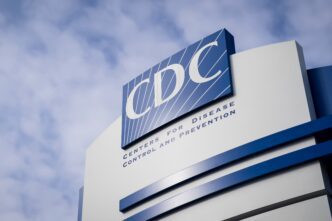Former President Joe Biden’s recent diagnosis of metastatic prostate cancer has sparked widespread concern and curiosity among the public. Many are eager to understand how long he has been living with the disease, the treatment options available to him, and his overall prognosis.
The Discovery and Diagnosis
The journey to Biden’s diagnosis began when he started experiencing increased urinary symptoms, prompting a medical examination that revealed a prostate nodule. Such nodules are typically detected during a digital rectal examination (DRE), where physicians feel for any irregularities in the prostate gland through the rectal wall. While not all nodules signify cancer—some are benign conditions like benign prostatic hyperplasia (BPH) or prostate stones—in Biden’s case, further tests confirmed the presence of prostate cancer. This included a prostate-specific antigen (PSA) blood test, imaging, and a biopsy. Additional scans showed that the cancer had spread to his bones, identifying it as high-risk, aggressive metastatic prostate cancer.
Understanding Metastatic Prostate Cancer
Metastatic prostate cancer occurs when cancer cells travel beyond the prostate, often to bones and lymph nodes. In the United States, around 5% to 7% of prostate cancer cases are metastatic upon initial diagnosis. Though this percentage seems small, it represents a significant number given that over 300,000 men in the U.S. and about 1.5 million globally are diagnosed each year. While early-stage prostate cancer boasts nearly a 100% five-year survival rate, metastatic cases see this rate plummet to around 37%. These statistics, however, are averages. Individual outcomes can vary widely, influenced by factors such as health status, age, cancer severity, and response to treatment.
Biden’s Gleason score of 9 indicates a highly aggressive form of prostate cancer, necessitating immediate, comprehensive treatment. This score is part of a system that grades cancer severity, with higher scores (8-10) suggesting aggressive cancers prone to rapid spread.
Treatment Options
Localized prostate cancer is often treated with robotic-assisted prostate removal or radiation therapy. In contrast, metastatic prostate cancer treatment focuses on managing symptoms, slowing disease progression, and maintaining quality of life. Common treatments include:
- Hormone therapy (androgen deprivation therapy, ADT): This suppresses testosterone, a key driver of prostate cancer cell growth.
- Chemotherapy: Utilized when hormone therapy alone isn’t enough, these drugs work to slow cancer progression.
- Radiation therapy: Targets metastatic lesions to reduce pain and symptoms, particularly in bones.
- Immunotherapy and precision medicine: These leverage the immune system or target specific genetic markers to fight cancer.
- Supportive care: Focuses on alleviating symptoms and enhancing quality of life.
These advanced treatments can effectively manage metastatic prostate cancer but often bring side effects like fatigue, changes in sexual function, hot flashes, mood swings, and muscle mass loss. Treatment plans are highly personalized, considering the patient’s health, age, other medical conditions, and personal preferences. For former President Biden, medical experts will tailor a treatment strategy that aligns with his unique health situation and life quality aspirations.
The Ripple Effect
- Public Awareness: Biden’s diagnosis may elevate public awareness about prostate cancer, encouraging more men to undergo regular screenings.
- Healthcare Focus: Increased attention to prostate cancer could lead to more research funding and advancements in treatment options.
- Psychological Impact: As a public figure, Biden’s health struggles could resonate emotionally with many, highlighting the human aspect of dealing with cancer.
- Policy Influence: The situation may influence healthcare policies, potentially prompting initiatives for better cancer care programs.
- Community Support: The news could foster community support systems, offering resources and solidarity for those affected by prostate cancer.
- Personal Health Prioritization: The attention on Biden’s health might inspire individuals to prioritize their own health checks and lifestyle adjustments.








